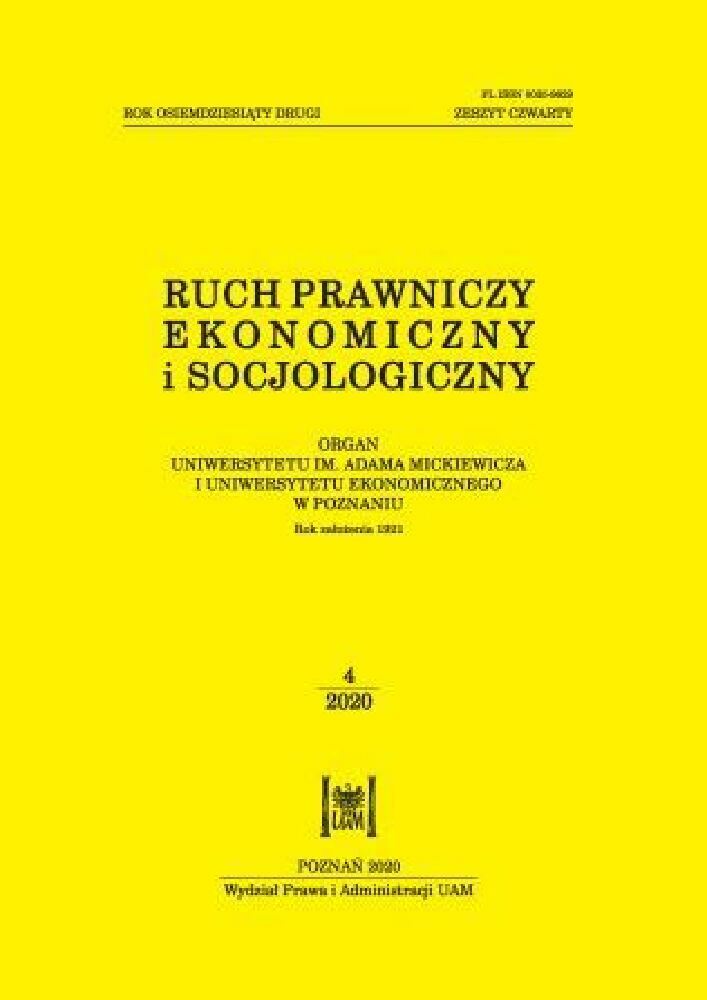Abstrakt
At a time when Africa is strengthening its attractiveness, acquiring its own story and arousing the interest of new partners, and when Europe is going through an important economic and institutional crisis, what can the new bases for cooperation between the European Union and the African Union be? The Abidjan summit in November 2017 offered an opportunity to reflect on the achievements of bi-regional cooperation between Africa and Europe in the field of migration, peace and security. It emphasized the priority of education, support for sustainable and inclusive development, and multi-sector cooperation, stating that all of them be carried out within the framework of horizontal cooperation favouring reciprocal Africa-European Union contributions. However, one must be aware of the constraints, weighing on both partners, which hinder implementation of the agreed strategies.
Bibliografia
Bachmann, O. (2011). The African Standby Force: External Support to an ‘African Solution to African Problem’? IDS Research Report n°67, Institute of Development Studies.
Balleix, C. (2013). La politique migratoire de l’Union européenne. Paris.
Bigo, D. (1994). The European internal security field: stakes and rivalries in a newly developing area on police intervention, [in:] M. Andrson, M. Den Boer (eds.), Policing Across National Boundaries. London :161–173.
Bigo, D. (2005). Le point de vue du politiste, [in:] F. Julien-Laferriere, H. Labayle, Ö. Edstrom (eds.), La politique européenne d’immigration et d’asile: Bilan critique cinq ans après le traité d’Amsterdam. Bruxelles: 77–83.
Burges, J.P. (2011). Security, migration and integration, [in:] J.P. Burges, S. Gutwirth (eds), A Threat against Europe? Security, Migration and Integration. Bruxelles: 13–15.
Cholewinski, R. (2005). Preventing irregular migration, i[in:] F. Julien-Laferriere, H. Labayle, Ö. Edstrom (eds.), La politique européenne d’immigration et d’asile: Bilan critique cinq ans après le traité d’Amsterdam. Bruxelles: 95–119.
Czaplinski, W. (2003). Freedom of movement of goods, [in:] J. Barcz (ed.), European Union law. Warsaw: 543.
Dersso, S.A. (2010). The role and place of the African Standby Force within the African Peace and Security Architecture. Institute for Security Studies Africa. ISS Paper 209. Pretoria.
Dony, M. (2010). Un nouveau cadre normatif, [in:] Ch. Kaddous, M. Dony (eds.), D’Amsterdam à Lisbonne: Dix ans d’espace de liberté, de sécurité et de justice. Basel: 2–59.
Dusch, S. (2002). Le trafic d’êtres humains. Paris.
Fassi, E., Lucarelli, S. (eds.) (2017). The European Migration System and Global Justice. A First Appraisal. GLOBUS Report 1. Oslo.
Huysmans, J. (2000). The European Union and the securitization of migration. Journal of Common Market Studies 38(5): 751–777.
Huysmans, J. (2006). The Politics of Insecurity: Fear, Migration and Asylum in the EU. Abingdon.
Kaddous, C. (2010). Un nouveau cadre pour la dimension externe de l’espace de liberté, de sécurité et de justice, [in:]: Ch. Kaddous, M. Dony (eds.), D’Amsterdam à Lisbonne: Dix ans d’espace de liberté, de sécurité et de justice. Basel: 61–79.
Kawecka-Wyrzykowska, E. (2007). Economic aspects of free movement of goods in the EU and common commercial policy, [in:] J. Barcz, E. Kawecka-Wyrzykowska, K. Michłowska-Gorywoda (eds.), European Integration. Warsaw: 188.
Kilingebiel, S. (2005). Africa’s New Peace and Security Architecture: Converging the Roles of External Actors and African Interests. African Security Review 14: 35–44.
Koff, H. (2008). Fortress Europe or a Europe of Fortresses? The Integration of Migrants in Western Europe. Bruxelles.
L’helgoualch, E. (2011). Panique aux frontières: Enquête sur cette Europe qui se ferme. Paris.
Labayle, H. (2010). La nouvelle architecture de l’espace de liberté, de sécurité et de justice, [in:] Ch. Kaddous, M. Dony (eds.), D’Amsterdam à Lisbonne: Dix ans d’espace de liberté, de sécurité et de justice. Basel: 3–27.
Lavenex, S. (2008). A Governance Perspective on the European Neighbourhood Policy: Integration beyond Conditionality? Journal of European Public Policy 15(6): 938–955.
Loescher, G. (2002) State Responses to Refugees and Asylum Seekers in Europe, [in:] A.M. Messina (ed.), West European Immigration and Immigrant Policy in the New Century. London: 33–45.
Megherbi, N., Aumond, F. (2010). Le PNUD et la sécurité humaine, [in:] R. Kherad (ed.), La sécurité humaine: Théorie(s) et pratique(s). Paris: 17–37.
Pascouau, Y. (2010). La politique migratoire de l’Union européenne. De Schengen à Lisbonne. Paris.
Van Selm, J. (2002). Immigration and asylum of foreign policy: the EU’s approach to migrants and their countries of origin, [in:] S. Lavenex, E.M. Uçarer (eds.), Migration and the Externalities of European Integration. Lanham: 143–160.
Wihtol De Wenden C., De Tinguy, A. (eds.) (1995). L’Europe et toutes ses migrations. Bruxelles.
Wihtol De Wenden, C. (2013). La question migratoire au XXIe siècle. Presses de Sciences Po. Joint Communication at the European Parliament and Council: renewed impetus for the EU-Africa partnership (4th May 2017).
Williams, P. (2011). The African Union’s Conflict Management Capabilities. New York.
Licencja
Prawa autorskie (c) 2020 WPiA UAM

Utwór dostępny jest na licencji Creative Commons Uznanie autorstwa – Użycie niekomercyjne – Bez utworów zależnych 4.0 Międzynarodowe.





